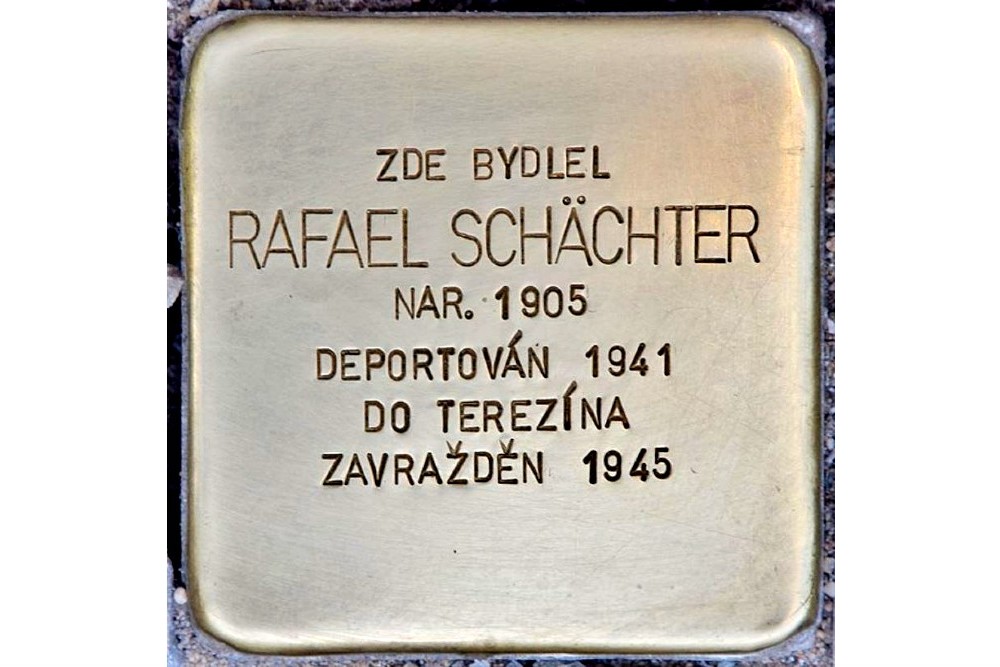Stumbling Stone Belehradska 573/61
This small brass memorial plaque (Stolperstein or stumbling stone) commemorates:
* Rafael Schächter, born 1905, deported 1941 to Theresienstadt, murdered 1945.
Rafael Schächter studied piano, composition, and conducting at the Prague Conservatory. In 1937 he founded the Prague Chamber Opera. Four years later he was deported to Theresienstadt with about 1000 other Jews from Prague. Many musicians were held at Theresienstadt where they organized performances of their own and others’ works.
Rafael Schächter is remembered for his role as conductor of the Verdi Requiem, The Bartered Bride, and other music at Theresienstadt. One souce says that the Nazis ordered him to perform the Requiem first in September 1943. He had one score; the singers learned their parts by rote, rehearsing at nights after their full days of labor. The Requiem was performed a total of 16 times, with different performers replacing those who had been deported away from the camp. The last performance was in the summer of 1944 for the Red Cross inspection visit. The Nazis controlled what the inspectors saw. The singers hoped that the inspectors would understand the "Dies Irae" ("Wrath of God") as a message about the evil of the Nazis. They did not, and Rafael Schächter and the performers were deported to Auschwitz in October 1944. He was murdered on a death march just one month before Czechoslovakia was liberated.
A survivor remembers singing The Bartered Bride.
"What The Bartered Bride meant to the inhabitants of Terezín and to us who sang in it, is something totally, totally unforgettable. I sang in it 28 times. There is not a sound of it that I cannot go on singing when I hear it on the radio. Only, I don’t hear it. I live it again, and I’m again 20 years old, and again surrounded by the faces of the people in the chorus." Marianka Zadikow May, survivor
"Stolpersteine" is an art project for Europe by Gunter Demnig to commemorate victims of National Socialism (Nazism). Stolpersteine (stumbling stones) are small, 10x10cm brass plaques placed in the pavement in front of the last voluntary residence of (mostly Jewish) victims who were murdered by the Nazis. Each plaque is engraved victim’s with the name, date of birth, and place (mostly a concentration camp) and date of death. By doing this, Gunter Demnig gives an individual memorial to each victim. One stone, one name, one person. He cites the Talmud: "A human being is forgotten only when his or her name is forgotten."
Do you have more information about this location? Inform us!
Source
Nearby
Museum
Point of interest
- Former Gestapo Headquarters Prague - Praha
- National Memorial to the Heroes of the Heydrich Terror - Praha
- Prague Castle - Praha
Monument
- Memorial Ladislav Polák - Praha
- Memorial Czech 'Children Transportation' - Praha
- Memorial Crypt Attack Heydrich - Praha
Cemetery
- Commonwealth War Cemetery Prague - Praha
- Grave Ashes Victims Theresienstadt - Praha
- Soviet War Graves Prague - Praha




